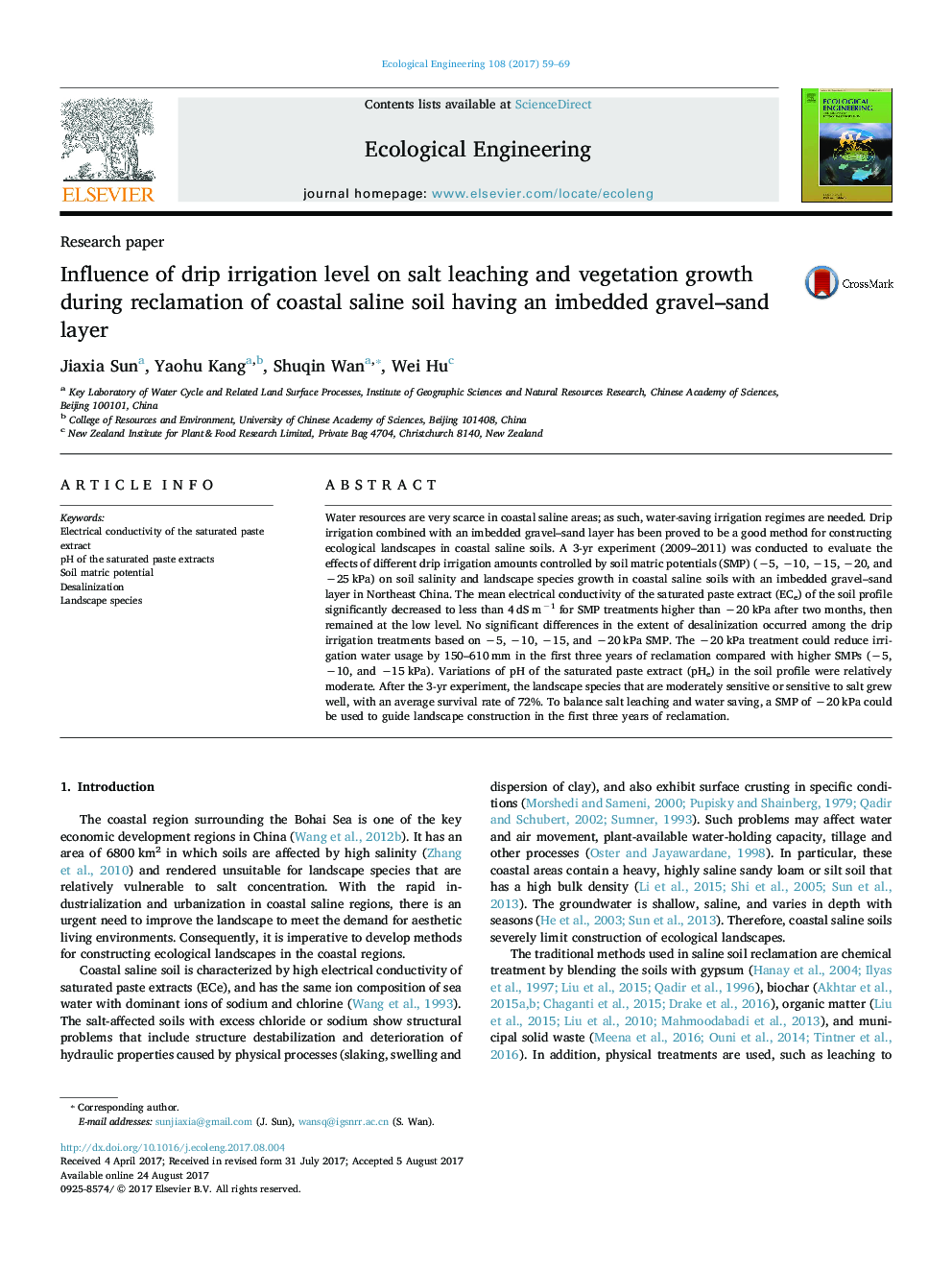| Article ID | Journal | Published Year | Pages | File Type |
|---|---|---|---|---|
| 5743518 | Ecological Engineering | 2017 | 11 Pages |
Abstract
Water resources are very scarce in coastal saline areas; as such, water-saving irrigation regimes are needed. Drip irrigation combined with an imbedded gravel-sand layer has been proved to be a good method for constructing ecological landscapes in coastal saline soils. A 3-yr experiment (2009-2011) was conducted to evaluate the effects of different drip irrigation amounts controlled by soil matric potentials (SMP) (â5, â10, â15, â20, and â25Â kPa) on soil salinity and landscape species growth in coastal saline soils with an imbedded gravel-sand layer in Northeast China. The mean electrical conductivity of the saturated paste extract (ECe) of the soil profile significantly decreased to less than 4Â dSÂ mâ1 for SMP treatments higher than â20Â kPa after two months, then remained at the low level. No significant differences in the extent of desalinization occurred among the drip irrigation treatments based on â5, â10, â15, and â20Â kPa SMP. The â20Â kPa treatment could reduce irrigation water usage by 150-610Â mm in the first three years of reclamation compared with higher SMPs (â5, â10, and â15Â kPa). Variations of pH of the saturated paste extract (pHe) in the soil profile were relatively moderate. After the 3-yr experiment, the landscape species that are moderately sensitive or sensitive to salt grew well, with an average survival rate of 72%. To balance salt leaching and water saving, a SMP of â20Â kPa could be used to guide landscape construction in the first three years of reclamation.
Keywords
Related Topics
Life Sciences
Agricultural and Biological Sciences
Ecology, Evolution, Behavior and Systematics
Authors
Jiaxia Sun, Yaohu Kang, Shuqin Wan, Wei Hu,
